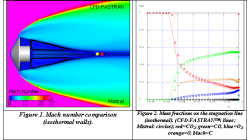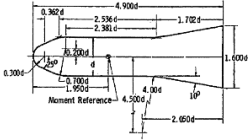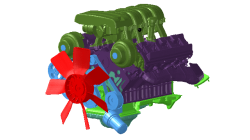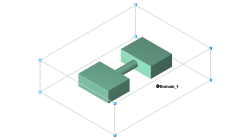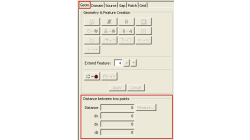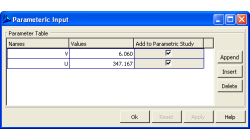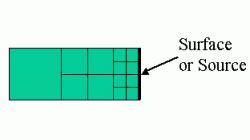- Home
- Resources
- Tips & Tricks
Tips & Tricks
Chemical-kinetic Model for Mars Atmosphere Re-entry Applications
The shock layer flow over a blunt body entering a planetary atmosphere at a hypersonic speed will dissociate and partially ionize. A reliable prediction of the flow-field for such application requires a chemical-kinetic model. For Mars atmosphere, the five species Park'94 is considered [1]. The dissociation of CO2 is producing C, CO, CO2, O and O2.
Abraham
Meganathan
CFD
Improvements to Parallel Simulation Setup in CFD-FASTRAN
Setting up and launching a parallel simulation has become much simpler and easier in FASTRAN. This note discusses some of these developments. Let’s start with things that have not changed. There are still two versions of CFD-FASTRAN solvers for parallel cases. The difference between the two versions is the underlying parallel communication mechanism, the choice of which is decided by the type of mesh used.
Abraham
Meganathan
CFD
Simulation of the Hypersonic Flow Past a Blunted Cone-cylinder-flare (HB-2) using CFD-FASTRAN
Study of supersonic flows is of high interest for a wide variety of problems including design of high speed planes and other related applications [1]. This user tip presents a validation of numerical methods against experimental data.
Abraham
Meganathan
CFD
Making it Easy to Add a Box Source in CFD-VisCART
Sources are used in CFD-VisCART to refine the grid in localized regions of the domain. One of the many types of sources available is the Box Source where the user specifies a cuboid box around the region a finer grid is required. In the earlier versions, the user would have to add a Box Source and then specify its X, Y and Z extents to position the box in the desired location.
Abraham
Meganathan
CFD
Hole Detection Feature in CFD-VisCART
CFD-VisCART can handle geometries with small gaps, cracks and overlapping parts, but what if there is a big hole or opening in one of the parts that the user is not aware of? The grid will flow through this opening and the result will be a mesh that has cells both inside and outside the model. This leaves the user with the near impossible task of finding this opening. In CFD-VisCART, a Hole Detection feature has been introduced that performs this task for the user.
Abraham
Meganathan
CFD
Distance Measuring Tool in CFD-VisCART
CFD-VisCART has a simple and easy-to-use tool for measuring the distance between two points in a geometry. This tool can be found under the Geom tab.
Abraham
Meganathan
CFD
Parametric Studies with CFD-FASTRAN
CFD-FASTRAN-GUI has a new "Parametric Set Up" template that allows the user to run parametric cases. Most of the text input fields - including boundary conditions, properties, and solver control parameters - are available for parametric run. This allows the user to submit the parametric cases in one shot and post-process the results later on.
Abraham
Meganathan
CFD
Understanding cell-splitting in CFD-VisCART and its effect on cell count
A grid created in CFD-VisCART will have a high percentage of Cartesian cells (100% for Stair-Step Mesh; as high as 90-95% for Projected Mesh). Since these form the bulk of the grid, it helps to make sure that these cells are built in an efficient manner.
Abraham
Meganathan
CFD
Using CFD-VisCART in Batch Mode
CFD-VisCART allows you to handle extremely complex geometries with lots of details. Often, you may have a geometry that you only modify slightly, but would like to use the mesh parameters that you used previously. In order to make this very simple, a batch mode was implemented for CFD-VisCART v2006.
Abraham
Meganathan
CFD
Splitting a Model in CFD-VisCART
CFD-VisCART is a 3D unstructured adaptive Cartesian mesh generator. It is ideally suited for external aerodynamics and automotive underhood applications involving extremely complex geometries. Models/geometries in SAT, Parasolid, STL, Nastran, 3DS, Plot3d and FAST formats can be imported into CFD-VisCART.
Abraham
Meganathan
CFD
